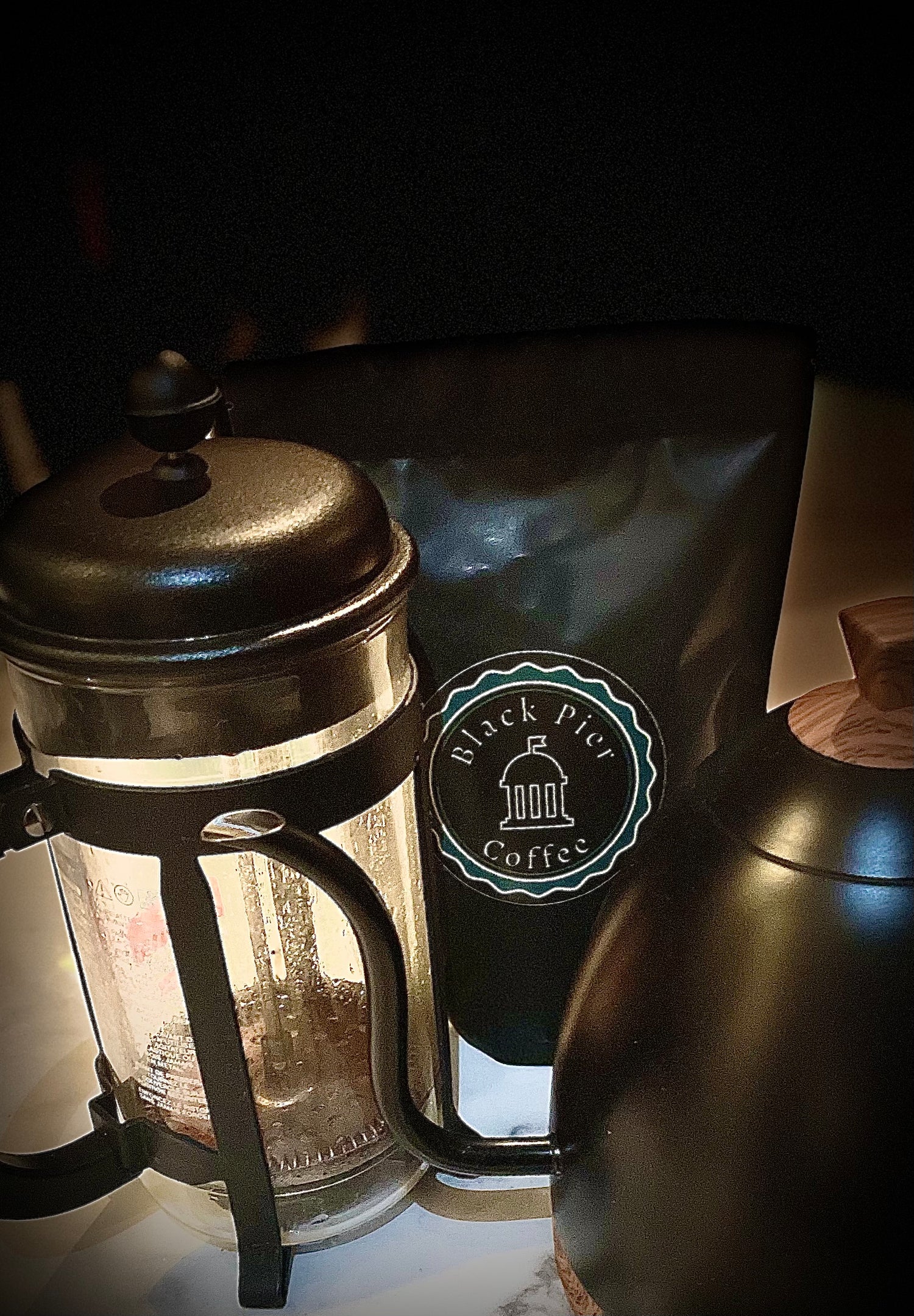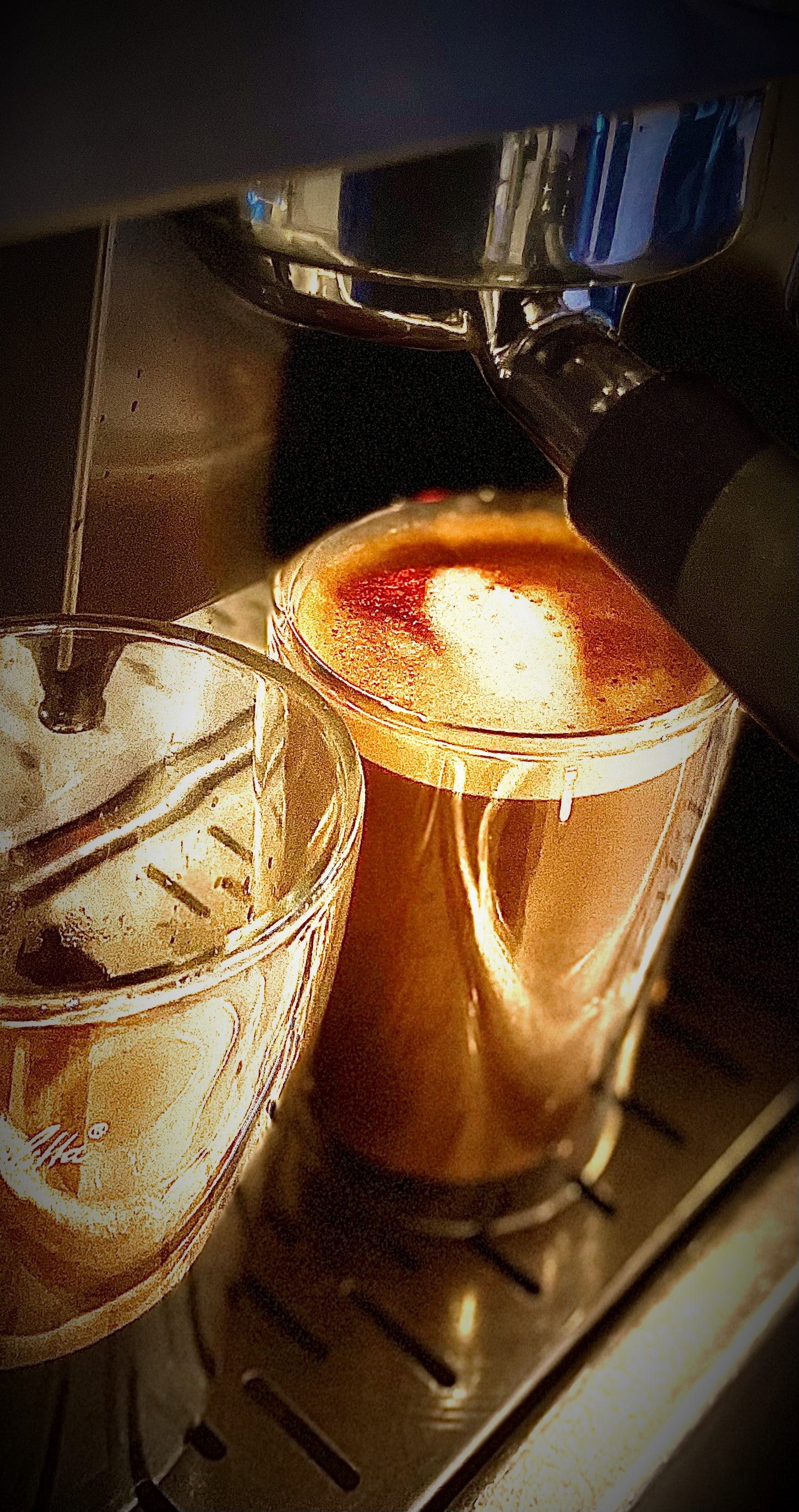How To


So glad to see you on this page. As we mentioned on the Coffee Basics page, a lot goes into making a cup of coffee from beginning to end and one single mistake along the way can ruin it. Fortunately reality exists somewhere between the perfect cup and a ruined cup. You'll probably never achieve the elusive perfect cup, but if you do, make the most of it because it's unlikely to happen again, however precise you are in your methods. Although there are some general rules to a good tasting coffee, the perfect cup is very much a matter of opinion and there are far too many variables to get exactly right every time and many of them are beyond your control. This doesn't mean you can't get an excellent cup every time so let's focus on that. Whichever extraction method you use, do it right and do it consistently. Experiment slowly over time to adjust things to your taste or just stick with something you're happy with, either way following these guides will give you the best start.

At Black Pier we strive for balance in everything we do so we wouldn't expect our customers to obsess over making their coffee. Coffee helps to balance your day and should be enjoyed as a positive addition to your life, so making it should be as simple and enjoyable as possible while giving you great results every time. For this reason we look for something called the Optimum Balance which gives us the best coffee for the minimal effort. This optimum balance goes into everything we do, our beans, roasts, blends and procedures are all chosen towards achieving this goal so you'll feel like Goldilocks eating Mummy-Bear's porridge.

Cafetière Extraction

Cafetières are a really effective, simple and inexpensive way to make a great cup of coffee. Important things to consider when extracting coffee using a cafetière are as follows:
- Amount of coffee grinds
- Amount of water
- Time before plunging
- Fineness of coffee grinds
These variables can be adjusted to tweak the strength and flavour of your coffee. If you're new to cafetière coffee we recommend using our cafetière grind rather than grinding our whole beans yourself.

- 1 -
prepare
With our cafetière grind we recommend using a ratio of 15g of coffee to 200ml of water. Measure out the desired amounts of coffee and water, place the grinds into the cafetière and the water in the kettle.
- 2 -
execute
Boil the water and pour onto the grinds in the cafetière as soon as the water has stopped bubbling. Boiling water will not burn the coffee, you can't physically burn the coffee grinds with boiling water but it is possible to over extract the coffee which can taste a little burnt if left extracting for too long. The main reason to wait for the water to come off the boil is for safety since it's not safe to pour bubbling, energetic hot water. You need very hot water for extraction so do not leave the water to cool. When the water hits the cool cafetière and grinds, its temperature will immediately drop to the required temperature for extraction so there's no need to pre-heat or cool anything. Keep it simple.
- 3 -
wait
Before placing the lid on the cafetière, start a timer for 4 minutes and give the grinds a quick stir, preferably with a wooden or plastic spoon to avoid a further drop in water temperature caused by transferring heat to a metallic spoon.
- 4 -
complete
Once the desired time has elapsed, slowly press the plunger through the coffee solution as far down as it will go, then immediately pour the coffee from the cafetière into the serving cups. It should be a hot drinking temperature by this time but always check the temperature before drinking to avoid burning yourself.

Espresso Extraction

At Black Pier we like to keep things simple where possible, giving you the best cup of coffee for the minimal effort. Unfortunately, not everything in life is simple and coffee is one of those things. And then there's espresso. We really set ourselves a challenge when we decided to create a simple guide to espresso extraction, but we never back down from a challenge, so here it is, our simple, effective, rule-of-thumb for making great espresso. Important things to consider when making an espresso are as follows:
- Amount of coffee grinds (Weight of grinds)
- Size of espresso shot (Weight of beverage)
- Extraction time (Time taken to pour)
- Fineness of coffee grinds
The problem with Espresso is that there are a huge number of other important variables which are 1) not easy to obtain and 2) not under our control. So being a simple guide, as before we will give you a good base to build on which can then be tweaked to your liking at your leisure and it all starts with our espresso base rule...
The Black Pier Espresso Rule of 8™
8 =
Weight of grinds (g) =
Time taken to pour (s) =
Half weight of beverage (g) =
Medium strength single espresso shot.
This rule acts as a base from which to experiment and fine-tune your espresso. The rule starts with 8 for an average strength single shot, so let's say we want an average strength double shot and we double 8 to 16. So we want 16 grams of grinds, extracted over 16 seconds creating an espresso shot weighing 32 grams. Not all machines can take as much as 16 grams of grinds so we could increase 8 to 10 for example to give us something like a strong single shot. Now we have 10 grams of grinds in the filter basket, extracted in 10 seconds which creates an espresso shot weighing 20 grams. We adjust the grind coarseness to achieve these goals, as explained in the example to follow.
Try your best to commit this rule to memory and you'll never go wrong. You will probably also find that if you deviate too far from this rule you'll start to notice a significant decline in quality. The reason this rule is so important is that you are often limited with the amount of coffee grinds you can use depending on your equipment and every machine will behave slightly differently for reasons we won't go into. So let's put it into practice with some values you might well use on your home espresso machine which is limited to say 12 grams of grinds.

- 1 -
prepare
First of all ensure your equipment is clean then place the portafilter into the group head and turn on your espresso machine to give it time to heat up. When the water is hot, run a small amount of water through the group head, leaving the filter in place. Measure 12g of coffee grinds (we will discuss grinder settings later). Get your timer and your cup ready. Try to keep your cups warm by always storing them on top of the espresso machine or anywhere warm. Measure the weight of your empty cup for later use. Don't assume all cups in a matching set will weigh the same, they will almost certainly be different.
- 2 -
execute
Remove the filter from the group head and wipe it dry. Put the grinds into filter basket and flatten (if you have the tools for it) then tamp with moderate force using a coffee tamper. Ensure the tamped coffee bed is flat and level with the rim of the basket before putting the filter back into the group head and starting the water flow. Get that timer ready!
- 3 -
wait
You should see nothing for a few seconds as you hear the pump pushing water through your coffee bed. As soon as you see coffee starting to pour, start that timer. There should be a steady gentle flow of coffee, not gushing out, not spattering and not stalling. The liquid should start out dark and quickly get lighter as the coffee extracts. When the timer expires at 12 seconds, stop the pump. If your machine is one which does not immediately cut the flow of liquid to the cup you will need to find a safe and clean way to quickly remove the cup to ensure nothing goes into it after the required time has passed.
- 4 -
complete
Measure the weight of the beverage by weighing the filled cup and subtracting the weight of the cup from step 1. If we've hit our target we should have 24 grams of espresso in the cup. If there's not enough then increase the coarseness of the grinder for next time. If there's too much espresso then reduce the coarseness of the grind for next time.
Over time you will get a feel for the extraction and will be able to tell if something isn't right. Also you will be familiar with the taste of a good extraction so there's no need to keep measuring and adjusting things if your coffee is good. This process is a way to adjust your espresso effectively and develop your preferred method of extraction with ANY espresso machine.
Adding milk to espresso to make a latte or cappuccino for example is not discussed here as we focus on the extraction of the coffee beans. With the Black Pier Espresso Rule of 8™ you'll be on the right track, reaching the destination is down to you. Enjoy your journey!
